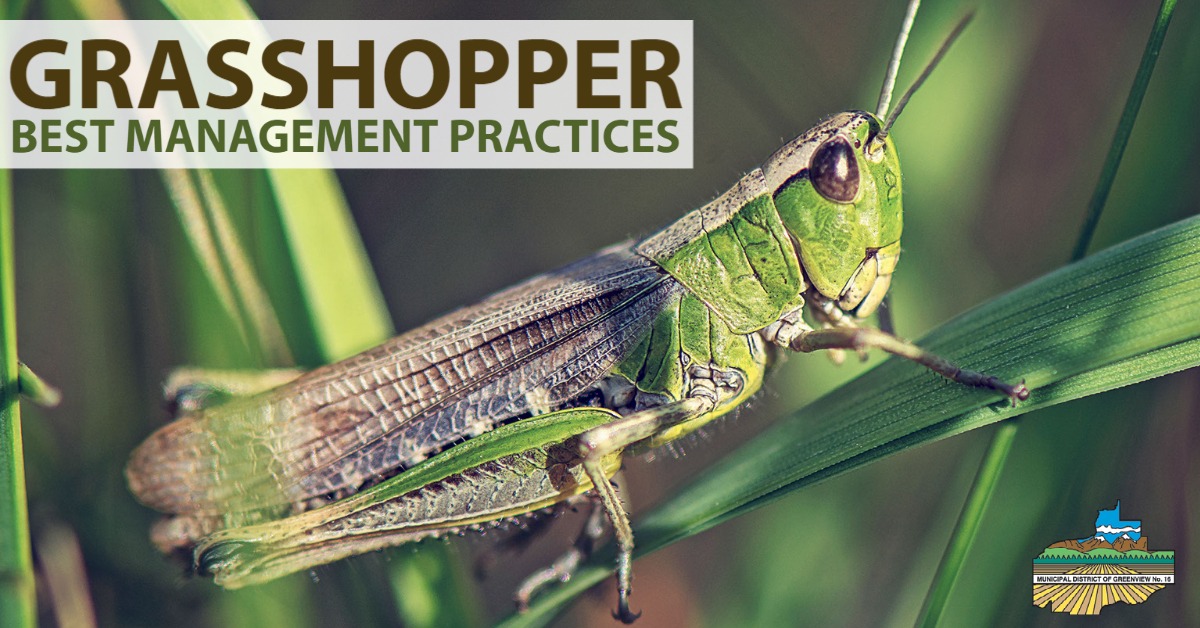Grasshoppers are a pest of cultivated crops and rangeland in the world’s semi-arid regions, and grasshopper numbers are being reported as high in Greenview this spring.
Although most grasshopper damage happens to cereal grains, other crops can be seriously affected. In a more diversified agricultural landscape where cereal crops are often rotated with other crops such as canola, lentil and peas, grasshoppers continue to cause significant economic loss in Alberta. Grasshoppers eat 30 to 100 mg of plant material (dry weight) each day.
Did you know…
- It is important to control grasshoppers before they become winged. A good size is 7 to 16 mm in length or ½ to ¾ of an inch. Once they become winged, they are much harder to kill.
- Talk to your neighbours. Try to get large groups of farmers in one area to agree to control the grasshopper populations. This way, the grasshoppers won’t migrate from their unsprayed land onto yours.
- The ideal temperature range for spraying grasshoppers is 20 to 25 degrees Celsius; most chemicals fit into this range, and the grasshoppers should be active. Check the label for the temperature range of whatever chemical you use to maximize its effectiveness. Always follow the label, especially related to re-entry of grazing animals.
- If you are having your crops sprayed by an aerial applicator, paying for a little extra water volume may be beneficial to ensure that you have good coverage of the area you are spraying.”
- The most serious economic damage due to grasshoppers will be while they are in the third to fifth nymphal stages. The economic threshold can be variable since there are several factors to consider. Considering these factors, the economic threshold in cereal crops ranges from 8 to 12 grasshoppers per square metre.
More information can be found at:


